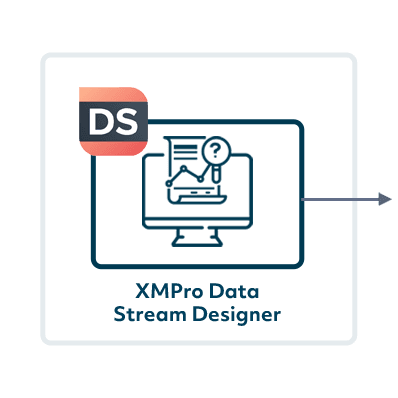Wheel and Track Wear Monitoring In The Rail Industry
Introduction
In the rail industry, the integrity of wheels and tracks is paramount for safe and efficient operations. XMPro’s solution focuses on monitoring wear and tear to prevent derailments and reduce maintenance costs.
The Challenge
Rail systems face significant challenges in maintaining the health of wheels and tracks:
- Risk of Derailments: Abnormal wear in wheels and tracks can lead to increased risk of derailments, posing serious safety hazards.
- Maintenance Efficiency: Identifying the optimal frequency for maintenance activities to ensure safety while controlling costs.
- Operational Downtime: Unplanned maintenance and repairs can lead to significant operational downtime and disruptions.
The Solution: XMPro iBOS For Wheel & Track Wear In The Rail Industry
XMPro’s solution for wheel and track wear monitoring leverages advanced sensors and analytics to ensure rail safety and performance. It continuously monitors key parameters like wheel wear, track wear, axle load, and vibration. Using machine learning algorithms, the system predicts issues before they escalate, providing real-time alerts for maintenance teams. Configurable dashboards display critical data such as wheel and track wear metrics, axle loads, and vibration amplitudes. Predictive insights optimize maintenance schedules based on actual conditions rather than fixed intervals. An asset overview map shows the status of trains, tracks, and crossings, with real-time recommendations for immediate attention. This technology enhances safety, operational efficiency, and the lifespan of both wheels and tracks.
Key Features
- Streamlining Sensor Data Integration and TransformationXMPro’s Data Stream Designer excels in integrating and transforming sensor data for rail systems. It seamlessly aggregates data from vibration and acoustic sensors on trains and tracks, utilizing XMPro’s comprehensive integration library. This system efficiently processes and interprets diverse sensor data, providing crucial insights into wheel and track wear patterns for proactive maintenance and operational decision-making.
- Machine Learning for Anomaly Detection:Implementing ML algorithms to analyze sensor data and detect anomalies indicating abnormal wear. Continuous learning and model refinement based on new data and identified wear patterns.
- Maintenance Scheduling Optimization:Using data-driven insights to optimize maintenance schedules, shifting from fixed intervals to condition-based maintenance.
- Real-Time Alerts and Reporting:Providing real-time alerts to maintenance teams about potential issues.Generating detailed reports on wheel and track conditions for maintenance planning and regulatory compliance.
How XMPro iBOS Modules Work Together To Create This Condition Monitoring Solution
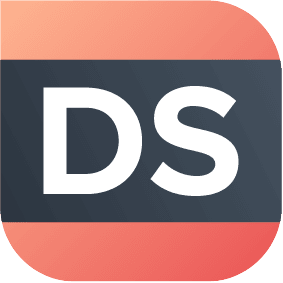
XMPro Data Stream Designer
XMPRO’s Data Stream Designer lets you visually design the data flow and orchestration for your real-time applications. Our drag & drop connectors make it easy to bring in real-time data from a variety of sources, add contextual data from systems like EAM, apply native and third-party analytics and initiate actions based on events in your data.
Figure 1: Wheel Wear Condition Monitoring Data Stream
This wheel wear condition monitoring data stream ingests real-time data from sensors measuring wheel profile, wheel vibration, track profile, and GPS timestamps. The data is combined with telemetry data and broadcasted for further analysis.Critical thresholds are continuously checked to flag high-risk conditions, generating alerts for the maintenance team. An anomaly detection model identifies subtle issues in the wheel and track wear, while a Predictive LSTM model forecasts wheel component longevity, providing insights into the Remaining Useful Life (RUL) of the wheels.
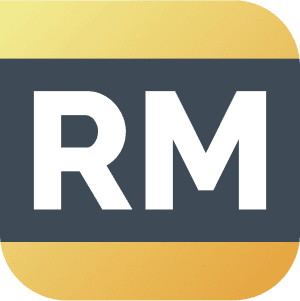
Recommendation Manager
XMPRO Recommendations are advanced event alerts that combine alerts, actions, and monitoring. You can create recommendations based on business rules and AI logic to recommend the best next actions to take when a certain event happens. You can also monitor the actions against the outcomes they create to continuously improve your decision-making.
Figure 1: Example Recommendation: Wheel Wear Threshold
This wheel wear threshold recommendation identifies an issue with the wheel exceeding predefined safety limits. It provides event data, including wheel wear depth, axle load, vibration amplitude, bearing temperature, timestamp, and wheel ID. Users can add notes, mark the recommendation as solved or a false positive, and create a work request with special instructions if necessary. This recommendation helps ensure timely maintenance actions to address the issue and maintain safe railway operations
Figure 2. Configure With Granular Rule Logic
This example wheel wear recommendation configuration allows users to set up granular rule logic. The interface enables selecting metrics such as wheel vibration, bearing temperature, and spring compression, and setting specific thresholds to trigger alerts. Users can categorize recommendations, enable execution order, and auto-escalate critical issues.
XMPro App Designer
The XMPro App Designer is a no code event intelligence application development platform. It enables Subject Matter Experts (SMEs) to create and deploy real-time intelligent digital twins without programming. This means that SMEs can build apps in days or weeks without further overloading IT, enabling your organization to accelerate and scale your digital transformation.
Figure 1. Real-Time Rail Asset Overview Dashboard
This dashboard provides a real-time view of rail assets with an interactive map that updates GPS coordinates of trains and track issues, offering a clear visual of railway lines. Each asset is marked with a color-coded status icon indicating its operational state, including alerts and error messages. The dashboard shows the overall status of asset categories like trains, crossings, tracks, maintenance vehicles, and substations, and highlights active recommendations from the system’s rule logic, such as exceeded bogie wear thresholds.
Key Features:
- Real-Time Asset Locations:
- An interactive map displays real-time GPS locations of rail assets, including trains, crossings, lines, maintenance vehicles, and substations.
- Color-Coded Status Icons:
- Assets on the map are marked with color-coded icons indicating their current operational status. Green signifies active and operational, yellow indicates warnings, and red represents critical issues needing immediate attention.
- Overall Asset Status Summary:
- A summary at the bottom provides a quick overview of the total number of active and inactive assets across various categories, including trains, crossings, lines, maintenance vehicles, and substations.
- Recommendations Panel:
- A list of active recommendations generated by the system’s rule logic, such as exceeded wheel wear thresholds, voltage fluctuations, and bogie health thresholds, ensuring immediate visibility of critical issues.
- Equipment Requiring Maintenance:
- A detailed graph and list show maintenance requirements across different assets, prioritizing those based on their upcoming service needs. This facilitates efficient maintenance scheduling and ensures timely interventions.
- Drill-Down Capabilities:
- Each section of the dashboard allows users to drill down into specific asset and recommendation details, providing granular insights and enabling targeted actions based on the system’s recommendations.
- Alerts and Error Messages:
- Real-time alerts and error messages are displayed, notifying maintenance teams of any detected anomalies that require immediate attention.
- Interactive Map Controls:
- Users can interact with the map to zoom in/out and click on specific assets to get more detailed information about their status and any ongoing issues.
This comprehensive view ensures that users have all the necessary information at their fingertips to monitor and manage rail assets efficiently, respond quickly to issues, and maintain optimal operational performance.
Figure 2. Asset Class Drilldown View
The Asset Class Drilldown view provides an in-depth analysis of rail track lines, presenting a comprehensive overview of current track alerts and work order statuses. It features a bar chart displaying the number of track lines with open alerts categorized by severity (high, medium, and no alerts) and a pie chart summarizing the status of current work orders (available, planning, and waiting). The asset list below details individual track lines, showing their last service dates, recommendations, and upcoming service schedules, allowing users to prioritize maintenance needs efficiently. Key metrics for the past 30 days, including new alerts, work requests, work orders, and time to resolution, are displayed for performance tracking.
Key Features:
- Alerts Overview: Graphical representation of open alerts categorized by severity – no alerts, medium, and high severity.
- Work Order Status: Displays current status of each asset, categorized as available, in planning, or waiting.
- Performance Metrics (Last 30 Days): Summarizes key metrics such as new alerts, number of work orders, open work orders, and open work requests. It also tracks the duration from alert initiation to work order completion, comparing it with the previous 30-day period.
- Asset Filtering and Service Information: Enables filtering across all train assets, showing details like the last service date, upcoming service schedules, and due dates.
- Recent Recommendations: Lists recent recommendations triggered for train assets, with options for users to view details and take necessary actions.
- XMPro Co-Pilot Integration: Features an interactive block where users can query the AI model, trained on internal data like train engine manuals, for specific advice on errors, warnings, and issues. This information can be directly linked to work order requests and triage instructions.
This dashboard is designed for ease of use, allowing quick access to vital information and efficient management of train assets.
Figure 3. Wheel Wear Asset Analysis View
The “Asset Analysis – Wheel Wear” view offers a detailed examination of the wheel wear condition for a specific train. Key metrics such as wheel wear depth, axle load, bearing temperature, and vibration amplitude are displayed at the top, providing real-time data and thresholds for quick assessment. The central section features a visual representation of the wheel, highlighting specific issues such as exceeded wear thresholds, with precise identification and error codes for easy response. To the right, the remaining useful life (RUL) prediction graph compares actual versus predicted RUL. Below, the running status of the wheel, including its train type, make, and description, is detailed for comprehensive monitoring.
Key Features:
- Comprehensive Asset Metrics: In this detailed view for Bogie B001, we concentrate on specific metrics crucial for monitoring wheel wear.Key metrics include Spring Compression, indicating load distribution and wear patterns; Bearing Temperature, signaling potential friction issues; Bearing Vibration Amplitude, identifying internal wear; and Wheel Vibration Amplitude, detecting uneven wear or defects. These metrics collectively provide a crucial overview for maintaining wheel health and ensuring operational safety.
- Interactive 2D and 3D Asset Models: Features detailed 2D and 3D models of Train T001, with capabilities to ‘explode’ the view for in-depth examination of specific components. Notably, the 3D model visually identifies issues, such as those highlighted by recommendation rules related to wheel and track wear. For instance, areas of concern, like the wheels and bogie of affected wheels, are marked in red for easy identification.
- Error Identification and Actionable Recommendations: Clicking on highlighted errors directs users to the associated recommendations, where a range of actions can be explored to address the issue. This functionality is integrated with XMPro’s Recommendation Manager for efficient problem resolution.
- Detailed Train Information: The view encompasses comprehensive information about Train T001, including its type, model, description, and manufacturer details.
- XMPro Co-Pilot Integration: This feature includes XMPro Co-Pilot, trained on internal company data, providing users with specific guidance and answers to queries related to Train T001. This AI-driven support enhances decision-making and problem-solving related to the asset.
This Asset Analysis View is designed to provide users with a holistic understanding of Train T001, combining detailed visual models with actionable data and AI-assisted insights for effective asset management.

XMPro AI
Experience the transformative power of XMPro’s Intelligent Business Operations Suite (iBOS) – Featuring comprehensive AI capabilities, XMPro iBOS helps to significantly increase product yield, drastically reduce downtime, and ultimately eliminate unexpected business events.
Figure 1: Embedded AI Example – Wheel Wear & Track Wear
Embedding XMPro AI Agents in XMPro Data Streams enables executable AI and machine learning for algorithmic business processes, significantly enhancing the capabilities of operational digital twins. This integration allows for advanced features such as real-time analytics, MLOps, and seamless embedding of AI into core business processes.
In this example of wheel wear condition monitoring, XMPro’s AI Agents empower the data stream to accurately identify and predict potential wheel wear issues. The process begins with the ingestion of real-time sensor data, including wheel profile, wheel vibration, track profile, and GPS timestamps. The data is normalized and contextualized with telemetry and operational information from digital twins.
Machine learning models, including anomaly detection and remaining useful life (RUL) prediction, are applied to detect deviations and forecast maintenance needs. The results are filtered, merged, and broadcasted for further action. The data stream generates actionable insights for maintenance scheduling and resource allocation, ensuring optimal wheel performance and minimizing the risk of failures.
Embedded AI Agents
XMPro offers a variety of AI agents to support diverse operational needs, including:
- Azure OpenAI: Enhances natural language processing capabilities.
- OpenAI Assistant: Facilitates conversational AI integrations.
- Anomaly Detection: Identifies unusual patterns in data to prevent operational failures.
- Forecasting: Predicts future trends based on historical data.
- Kmeans Clustering: Groups similar data points for more effective analysis.
- MLflow: Manages the machine learning lifecycle, including experimentation, reproducibility, and deployment.
- Regression: Provides predictive analytics to understand relationships between variables.
By embedding these powerful AI agents, XMPro transforms AI models into valuable assets that drive business growth and efficiency, bridging the gap between data flow and operational AI.
Why XMPro iBOS Wheel Wear Condition Monitoring In The Rail Industry?
XMPro’s Intelligent Business Operations Suite (iBOS) is uniquely equipped to address the complexities of Wheel Wear Monitoring in the rail industry, utilizing cutting-edge technology and analytics. Here’s how XMPro iBOS excels in this application:

Intelligent Digital Twin for Wheel & Track Wear Monitoring:
XMPro iBOS allows users to craft an intelligent digital twin of the bogie components, enabling detailed simulation and analysis. This virtual model is crucial for assessing wear patterns and predicting maintenance needs, enhancing the accuracy of anomaly detection.

Seamless Data Integration and Transformation:
Featuring a robust integration library, XMPro iBOS seamlessly incorporates data from various sensors, including vibration and temperature sensors on bogies. This integration is key to transforming raw data into meaningful insights for predictive maintenance.
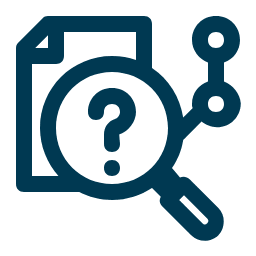
Advanced Machine Learning for Anomaly Detection:
Utilizing machine learning algorithms, XMPro iBOS analyzes sensor data to identify anomalies that indicate abnormal wear. This approach allows for early detection of potential issues that could lead to derailments or other safety hazards.
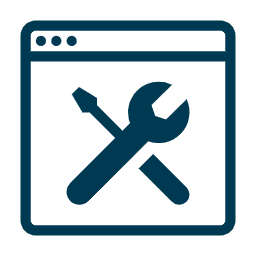
Optimization of Maintenance Schedules:
By analyzing wear patterns and predicting maintenance needs, XMPro iBOS helps optimize maintenance schedules. This shift from fixed-interval to condition-based maintenance reduces costs and prevents unnecessary downtime.

Real-Time Alerts and Proactive Decision Making:
The system provides instant alerts on emerging bogie issues, coupled with decision support tools. This feature aids maintenance teams in prioritizing actions based on the criticality of the detected anomalies.

Customizable Dashboards for Enhanced Visibility:
XMPro iBOS includes adaptable dashboards that display vital bogie health data, alongside comprehensive reporting features for maintenance planning and compliance purposes.

Scalability and Flexibility – Start Small, Scale Fast:
Designed for scalability and flexibility, XMPro iBOS can be tailored to various rail network sizes and integrates effortlessly with diverse sensor technologies. Its rapid deployment capability ensures a quick realization of value.

Enhanced Safety and Operational Efficiency:
By enabling proactive maintenance and early wear detection, XMPro iBOS significantly enhances the safety and operational efficiency of rail systems, reducing accident risks and ensuring reliable service.

Quick Time To Value – XMPro Blueprints
Utilize XMPro blueprints, pre-configured for bogie health monitoring, to quickly set up the digital twin dashboard. These blueprints integrate industry best practices, ensuring a swift and effective implementation.
In essence, XMPro iBOS offers a holistic, real-time, predictive, and integrated approach to bogie health monitoring. Its advanced capabilities in digital twin modeling, data integration, machine learning, and configurable dashboards make it an invaluable asset for ensuring the safety and efficiency of rail operations.
Use XMPro Blueprints for Quick Time To Value
Easily import Blueprints, Accelerators and Patterns into your environment, providing a starting point for configuring your own solutions.



















